Burnley history behind closed doors
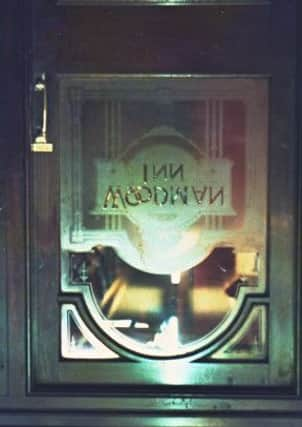

Of course, to a certain extent, that is inevitable largely because of the finite number of image available to me.
For today’s article, I have decided to look at a number of images of the interiors of properties in Burnley.
Advertisement
Hide AdAdvertisement
Hide AdMany of the buildings will be familiar to you from the outside but images of the space inside a building are no where near as common as those which show properties within a street or as part of the local landscape.
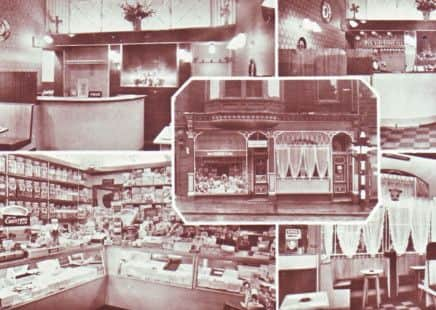

This is particularly true of postcard views but almost all of today’s images come from that source.
I have decided to exclude images of the interiors of houses. The Briercliffe Society Collection contains a number of these but all of them are photos rather than postcards. What I may do is write about the interior of houses for a future edition. There are, though, a number of problems associated with the images of houses that I already have. The problem is I can determine the part of town in which the houses stood, but the properties themselves no longer exist and I, often, can not be sure of precise addresses.
As you will see, some of the images are clearly photos taken of the interiors of local buildings, all of which were in Burnley. These range from an inside view of the former Court House in Bank Parade, through several churches, a hospital ward and some shops to images of properties which, though they cannot be described as “inside”, in that the images were taken under a roof, the photo shows a part of the property which could not normally be seen by the public.
Advertisement
Hide AdAdvertisement
Hide AdAn example of this is the image of one of Burnley’s very first petrol driven fire engines. The registration number is CW9 and, as you can see, the engine looks to be very new in this photo which was published as a postcard. Notice that part of the very new looking fire hose can be seen directly behind the fire officer sitting at the side of the vehicle. All of the officers look to be very proud of the new fire engine.
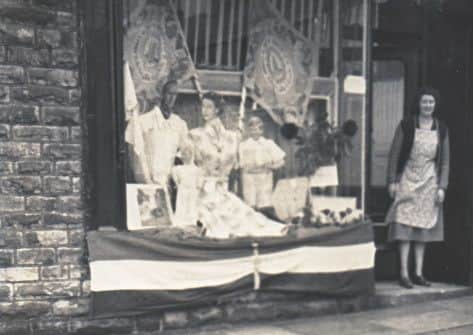

Burnley was allocated CW as well as HG as its local registration numbers. This was a consequence of the 1903 Motor Car Act but I have never checked the registration documents which I understand are still held in the Town Hall. I know the first numbers in the CW series were reserved for council-owned vehicles and that these numbers were transferred between different vehicles as they were replaced.
All I can say is that the vehicle shown in the photos looks to have been built in the 1920s. What I can add, however, is that the image was taken in the yard behind the Old Fire Station which was situated in Manchester Road, just up from the Town Hall but on the other side of the road.
I do not have a date for the building of the Old Fire Station but part of it served as offices for the council when it was created in 1861. This went on until 1868 when the council took over the Public Hall in Elizabeth Street. In 1881 the Old Fire Station was replaced by the one that many of you will remember and it is in the yard of this building that the image was taken.
Advertisement
Hide AdAdvertisement
Hide AdAnother of the pictures that many of you will not have seen before is the one of the inside of a ward at a Burnley hospital. I say a “Burnley hospital” because I have been told, by different people, that the image was taken in the Burnley Victoria Hospital and also at the Infirmary Ward of the Workhouse.
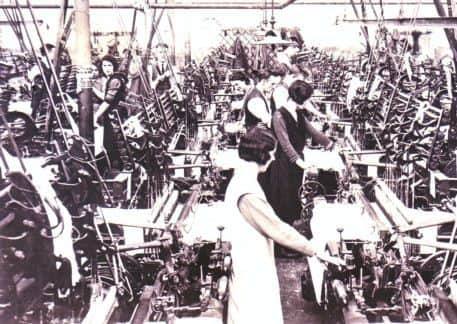

What can be said is that this is a photo of a Ladies’ Ward. Notice the gas lighting above the beds, the high ceilings and large windows designed to let in as much fresh air as possible. In this ward the ladies have a lovely floral display to admire and everything looks to be very clean indeed. Hospitals had come a long way by the time this image was taken.
The interior of the Court House shows what is described on the card as the “Old Court Room”, Keighley Green. The building, one of my favourites of those which have been lost in recent years, was actually in Bank Parade and, initially, it was a Methodist Chapel which was opened in 1788. It served this purpose until 1842 when, as a consequence of the building of the Wesley Methodist Chapel in Hargreaves Street in 1840, the earlier building was closed.
It was intended that the 1788 chapel should continue for religious purposes, if not for the Wesleyan Methodists, for another Protestant Church. However, to cut a long story short, the building became a court house and police station with police cells. Some of you will remember the “Police Bridge”, a footbridge over the Brun near here – its name derives from the fact it was much used by policemen as they started and finished their beats.
Advertisement
Hide AdAdvertisement
Hide AdThe room you can see was formerly the chapel and, though some reconstruction work to accommodate the needs of the magistrates and their officials has taken place, the layout has much in common with religious buildings of the time. Initially, the chapel did not have any heating and lighting was merely by candles but, in the image I publish today, you can see there has been an attempt at modernisation. There is even a clock on the wall.
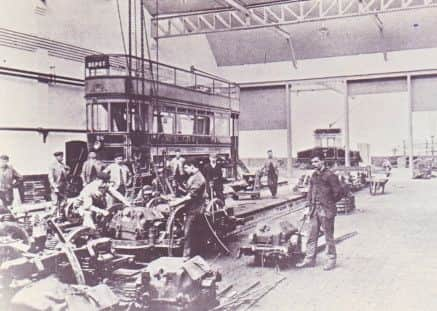

Of all the buildings in Burnley, the one we have most images of the interior is St Peter’s Church. I have chosen to include only one of them but it illustrates what a fine interior is possessed by the building. This image is taken from a postcard dated July 29th, 1910. It shows the nave and finely proportioned chancel of the church and, if you are familiar with the building, as it is over a century later, you might have thought that, apart from the loss of the pews, little had changed.
However, examination of the image will reveal that the gallery, which you can see on the left, is still in place in this picture. The gallery was added when it was clear the church, which had been enlarged in the 1790s, and just after the turn of that century, was not big enough to accommodate all of those who wanted to attend.
In fact, the children of the Church of England Sunday School in Roggerham contacted St Peter’s in 1832 indicating there was no room for them on Sundays at St Peter’s. It was after that that the church authorities decided, not only to enlarge St Peter’s, but to build more Anglican churches in the area. One of these was, of course, Briercliffe St James in 1841, but what is not generally realised is that, from about 1837, the Anglicans ran a mission in Haggate. It even had its own assistant curate, the Rev. William Mercer, who was also assistant curate at St Peter’s.
Advertisement
Hide AdAdvertisement
Hide AdReference to a mission church decided me to include an image of St Sav iour’s Free Church of England Church which was opened at Chaffer’s Yard in Adlington Street, off Church Street, Burnley. Initially it was described as a Mission Church but when, later, it moved to the Church Street premises, which are shown on the postcard, top left, the missionary title was dropped and replaced by a dedication to St Saviour.
Stephen Martin Child, in his book on Anglican Churches in Burnley, refers to Mr Rathbone, who is shown on the postcard. He was minister from 1910-35 and Stephen clears up one problem I have long since had with this card, which, if you read the words, left, is a kind of Christmas Card. My problem refers to the garden, right. I knew of no location, in the town centre, which accords with this garden, but Stephen tells us the garden was in Morse Street, where Mr Rathbone lived, and that Mr Rathbone liked gardening. He even made up Christmas wreaths and sold them for church funds.
At one time it was intended the church should move to Morse Street as the facilities in the church itself were, as you can see in the picture, somewhat inconvenient. Unfortunately, the move did not take place and St Saviour’s closed, possibly in 1949, though the building was not demolished until 1954.
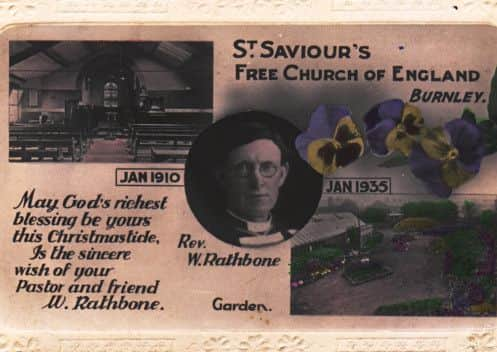

The remaining five photos include a shot of the workshops of the Queensgate premises of the Burnley Tramways; the weaving shed at Grenfell, Lodge Mill, Barden Lane, Burnley; the Chocolate Box, and its sister business, the Coffee Pot, which were in Manchester Road; a view of a small part of the Woodman Inn, Todmorden Road, Burnley, and the window of a shop at 37A Woodbine Road, Burnley.
Advertisement
Hide AdAdvertisement
Hide AdI have quite a lot of images of the Tram Depot at Queensgate which, as many of you will know, is still used by the operators of the local bus service. Unfortunately, the images I have are mainly reproduced from undated photos and it is difficult to be precise about when they were taken.
This photo shows part of the engineering workshop, a department which brought great distinction to Burnley Tramways. It was not that the Tramways made their own trams but the workshop was skilled in reconstructing trams as and when that was needed. The department also made special trams for special events and I might write about this in a future article.
The interior of Lodge Mill is typical of many weaving sheds of the first part of the 20th Century so I need to say little more here and the same is true of the business in Manchester Road. With the latter, the two shops are shown and I find that the interior of the Chocolate Box is particularly interesting. I cannot remember that shop but the Coffee Pot, I can recall. The shops were part of the block of property in which the Church Institute stood and, again as you will know, that building was destroyed by fire in 1960.
It is a pity I have so few images of the interior of Burnley pubs. I ought to add that this one is not the best as it tells us so little about the building. What it does do, however, is remind us of the quality of the workmanship that went into many of the better pubs in Burnley.
Advertisement
Hide AdAdvertisement
Hide AdThe Woodman, which is in Todmorden Road in town, has always been one of the “better sort” of pubs. I have not visited the place for quite a while but I recall going to the place, on Civic Trust business, many years ago and was struck by two things; the quality of the woodwork in the building, which to some extent, is shown here, and the gentlemen’s toilets which were made by the Burnley firm of Duckett’s.
When I saw them they were the best of the type I had ever seen.